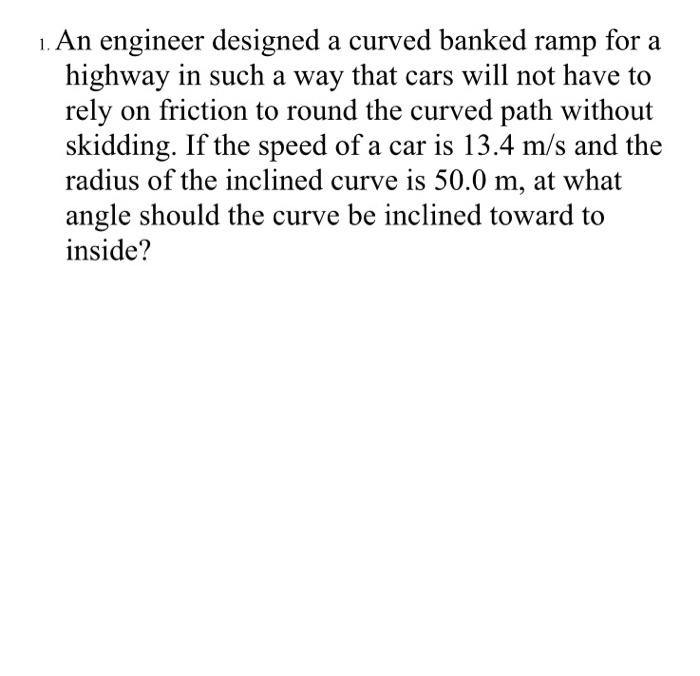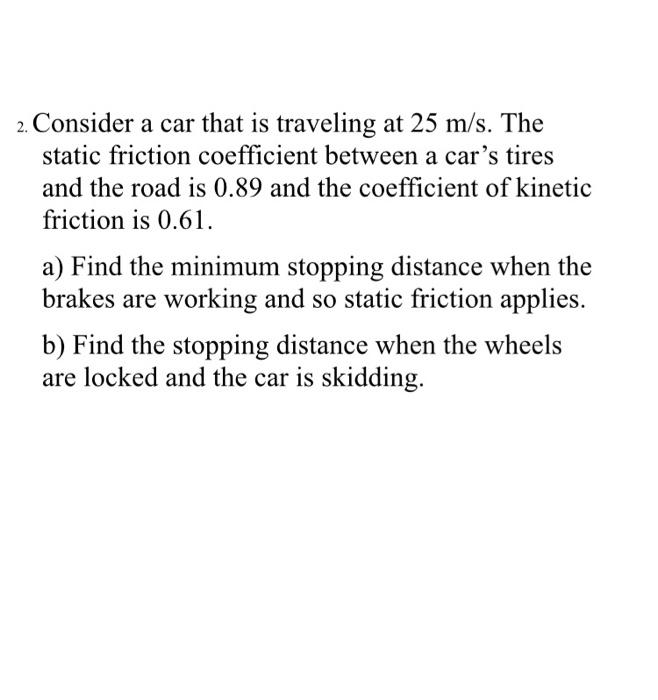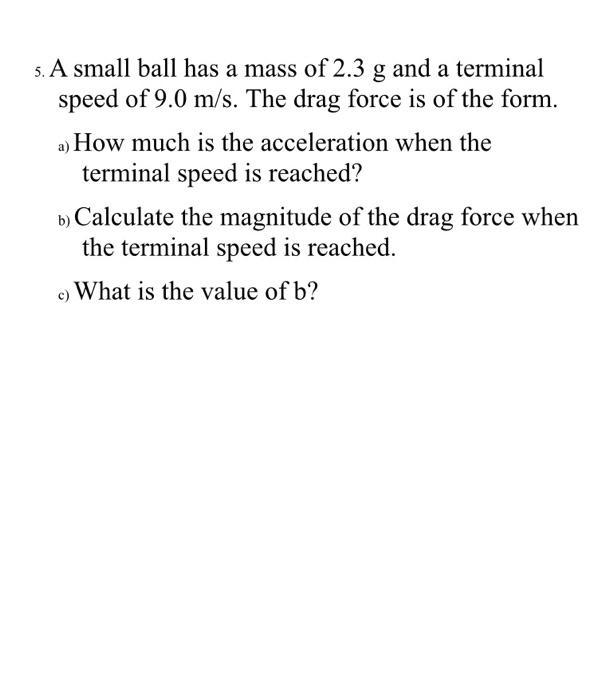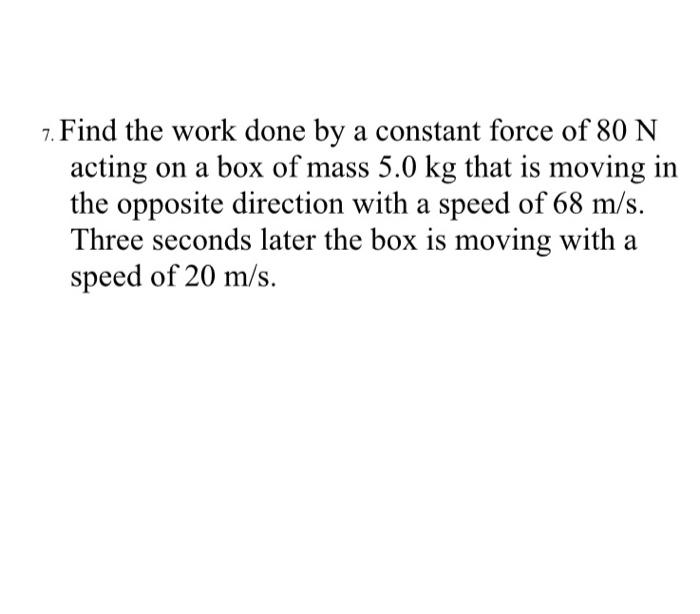Answered step by step
Verified Expert Solution
Question
1 Approved Answer
1. An engineer designed a curved banked ramp for a highway in such a way that cars will not have to rely on friction







1. An engineer designed a curved banked ramp for a highway in such a way that cars will not have to rely on friction to round the curved path without skidding. If the speed of a car is 13.4 m/s and the radius of the inclined curve is 50.0 m, at what angle should the curve be inclined toward to inside? 2. Consider a car that is traveling at 25 m/s. The static friction coefficient between a car's tires and the road is 0.89 and the coefficient of kinetic friction is 0.61. a) Find the minimum stopping distance when the brakes are working and so static friction applies. b) Find the stopping distance when the wheels are locked and the car is skidding. 3. The coefficient of static friction between the tires of a car and a horizontal road is 0.60. Neglect air resistance. (a) Would the acceleration be greater (in absolute value, i.e. in magnitude) if the coefficient of kinetic friction is used instead of the coefficient of static friction? (b) In case the ABS is working, would the kinetic friction coefficient or the static friction coefficient be used? (c) What is the advantage of using the ABS system? Would the stopping distance increase or decrease if it is used? (4) Calculate the maximum acceleration when the breaks are used (and the wheels are not locked). () What is the shortest distance in which the car can stop if it is initially traveling at 30 m/s? 4. The coefficient of static friction between a rubber tire and the road surface is 0.85. What is the maximum acceleration of a 1000-kg four-wheel- drive truck if the road makes an angle of 12 with the horizontal and the truck is climbing? 5. A small ball has a mass of 2.3 g and a terminal speed of 9.0 m/s. The drag force is of the form. How much is the acceleration when the terminal speed is reached? b) Calculate the magnitude of the drag force when the terminal speed is reached. c) What is the value of b? 6. A 4.0-kg block on a frictionless table is attached to a horizontal spring with k = 400 N/m. The spring is initially compressed 1.0 cm. a) Find the work done one on the block by the spring as the block moves from its compressed position to its equilibrium position. b) Find the final speed of the block. 7. Find the work done by a constant force of 80 N acting on a box of mass 5.0 kg that is moving in the opposite direction with a speed of 68 m/s. Three seconds later the box is moving with a speed of 20 m/s. 1. An engineer designed a curved banked ramp for a highway in such a way that cars will not have to rely on friction to round the curved path without skidding. If the speed of a car is 13.4 m/s and the radius of the inclined curve is 50.0 m, at what angle should the curve be inclined toward to inside? 2. Consider a car that is traveling at 25 m/s. The static friction coefficient between a car's tires and the road is 0.89 and the coefficient of kinetic friction is 0.61. a) Find the minimum stopping distance when the brakes are working and so static friction applies. b) Find the stopping distance when the wheels are locked and the car is skidding. 3. The coefficient of static friction between the tires of a car and a horizontal road is 0.60. Neglect air resistance. (a) Would the acceleration be greater (in absolute value, i.e. in magnitude) if the coefficient of kinetic friction is used instead of the coefficient of static friction? (b) In case the ABS is working, would the kinetic friction coefficient or the static friction coefficient be used? (c) What is the advantage of using the ABS system? Would the stopping distance increase or decrease if it is used? (4) Calculate the maximum acceleration when the breaks are used (and the wheels are not locked). () What is the shortest distance in which the car can stop if it is initially traveling at 30 m/s? 4. The coefficient of static friction between a rubber tire and the road surface is 0.85. What is the maximum acceleration of a 1000-kg four-wheel- drive truck if the road makes an angle of 12 with the horizontal and the truck is climbing? 5. A small ball has a mass of 2.3 g and a terminal speed of 9.0 m/s. The drag force is of the form. How much is the acceleration when the terminal speed is reached? b) Calculate the magnitude of the drag force when the terminal speed is reached. c) What is the value of b? 6. A 4.0-kg block on a frictionless table is attached to a horizontal spring with k = 400 N/m. The spring is initially compressed 1.0 cm. a) Find the work done one on the block by the spring as the block moves from its compressed position to its equilibrium position. b) Find the final speed of the block. 7. Find the work done by a constant force of 80 N acting on a box of mass 5.0 kg that is moving in the opposite direction with a speed of 68 m/s. Three seconds later the box is moving with a speed of 20 m/s.
Step by Step Solution
★★★★★
3.66 Rating (187 Votes )
There are 3 Steps involved in it
Step: 1

Get Instant Access to Expert-Tailored Solutions
See step-by-step solutions with expert insights and AI powered tools for academic success
Step: 2

Step: 3

Ace Your Homework with AI
Get the answers you need in no time with our AI-driven, step-by-step assistance
Get Started


